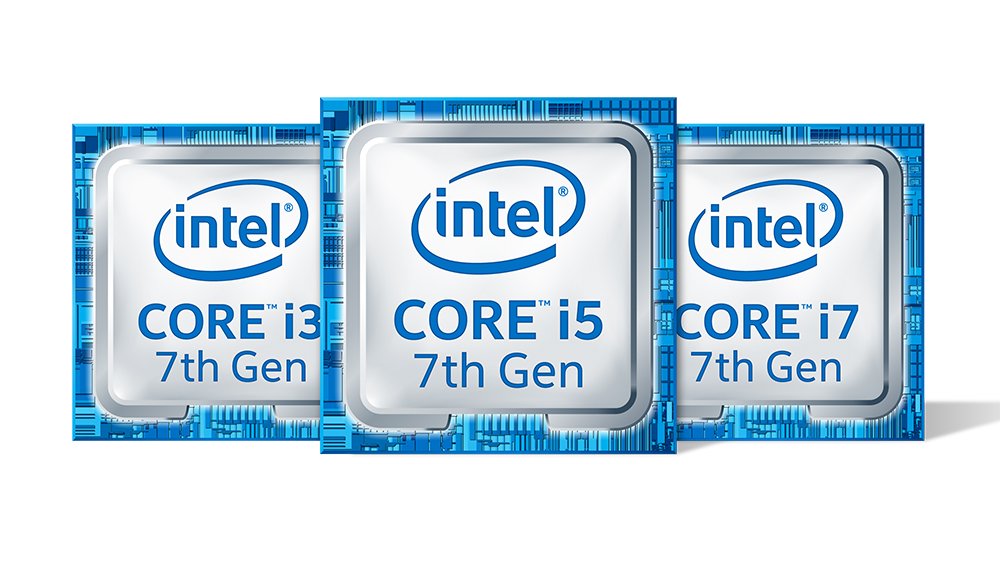Intel Core-i7 vs Core-i5 vs Core-i3
Intel has three CPU types but it can be a tad confusing


When buying or building a new PC, one of the key components to consider is the processor.
The majority of desktop PCs and laptops on the market come equipped with Intel chips - meaning that knowing the difference between each of the company’s CPU types is vital.
Intel’s i-Core series consists of Core i3, Core i5 and Core i7 processors – but determining which one to go for can be a confusing affair.
The number of Cores, clock speed, Turbo Boost, Hyper-Threading technology and cache size are all influencing factors on the CPU’s price and performance.
Below we guide you through these key differences between Intel’s i3, i5 and i7 processor chips.
Latest News
05/10/2016: The performance of Intel's newest Kaby Lake CPU has been leaked online, appearing on benchmark comparison site GeekBench.
Benchmark results for the Intel Core i7-7700K - the top-end, unlocked version of Intel's 7th-generation chips -- reveal that it may have some substantial performance improvements under the hood.
ChannelPro Newsletter
Stay up to date with the latest Channel industry news and analysis with our twice-weekly newsletter
According to the GeekBench results, the 7700K is around 25% faster than its sixth-generation counterpart for single-core operations, and more than 1.5 times faster for mulit-core processes.
It's also roughly on par with the Broadwell-E i7-6800K model, Intel's 'megatasking' chip designed for 4K gaming and video editing. That chip is for serious power users though, and has six hyperthreaded cores vs the new chip's four.
On the other hand, before anyone jumps to any conclusions, it's not known whether the chip was tested at its stock clock speed - the 'K' variant is designed for overclocking, so the result could be false positives resulting from a jacked-up processor.
26/09/2016: Intel launched the 7th-Generation Core chip, dubbed Kaby Lake, intended to power the next-generation of 4K UHD, 360-degree and virtual reality (VR) content.
Built on Intel's 14nm+ manufacturing process, Intel said Kaby Lake will power more than 100 2-in-1 devices and notebooks before the year is out.
Kaby Lake, which offers a 12 per cent performance increase compared with standard 14nm, according to Intel, and is “designed to tackle the immersive internet”.
The chip has also been designed to improve the performance of new internet-led experiences, such as 4K UHD content, 360-degree video, VR, merged reality and e-sports.
For example, Intel's 7th-Generation Core chip's energy efficiency improvements allow it to offer 9.5 hours 4K video playback, whereas its 6th gen Skylake predecessor supported only 1080p footage.
Intel said the new chip also has HEVC-10-bit and VP9 decode capability, and provides smooth 4K UHD playback while multitasking.
Further Kaby Lake SKUs will crop up in January targeting enterprises and enthusiast machines such as desktops PCs, workstations and gaming laptops, Intel said.
The basics
Intel’s Core series is separated into three categories: the Core i7, Core i5 and Core i3. Essentially, the Core model number indicates the level of performance and quality of the chip – starting with the i3 and moving up to the i5 and i7.
Intel Core i3 processors are entry-level chips, commonly found in lower-end devices – whereas the i5 chips tend to be found in mid-range PCs and laptops.
The Core i7 is predominantly aimed at high-end setups (and is naturally reflected in its higher price).
The way in which Intel releases its processors, however, can complicate matters; each generation of chips has an i3, i5 and i7 variant. For example, the 5th-generation Broadwell range includes each of these numbers – as does the 6th-generation Skylake family.
The CPU processing power is determined by a number of factors – including number of cores, cache size, clock speed, Turbo Boost and Hyper-Threading.
How to differentiate between chips
When trying to differentiate between these processor chips, clues to its performance and generation can be found within its naming pattern.
The generation of the chip is indicated by the first number after the Core model number - so a processor displaying the name ‘Intel Core i5-6200’ belongs to the 6th-generation of chips (Skylake).
The following three numbers – in this case, 200 – determine where the processor fits amongst others in its category. The higher these three digits are, the higher it is ranked in amongst its own kind.
So: an ‘Intel Core i5-6500’ will rank above its ‘Intel Core i5-6200’ counterpart.
Cores
A key influence in CPU performance is the number of cores the chip has. Essentially, each core is its own processor and the number of tasks (threads) that can be performed by a CPU at one time is dependent on this number – with two cores being the lowest amount for a processor (dual-core).
Intel Core i3 chips are all dual-core, whilst i5 and i7 models typically contain four (quad-core).
A processor with a higher number of cores effectively improves the speed and efficiency at which the system handles programs and tasks – which is why, for example, Core i5 and i7 chips are more suited to games and video-encoding than an i3.
Clock Speed and Turbo Boost
The clock speed of a processor is shown by a number followed by ‘GHz’ – for example, a processor specification may say ‘3.6GHz’. This figure displays the amount clock cycles a processor can perform per second. So in this case, 3.6GHz equates to 3,600,000,000 of these cycles.
A processor can, however, increase this clock speed using Intel’s Turbo Boost technology when more power is needed – whilst consuming less power.
There are a few factors that determine how much this can boost clock speed: the number of cores that are active, estimated current consumption, estimated power consumption and the temperature of the processor.
Intel Core i3 processors do not have Turbo Boost capability – whereas i5 and i7 models do.
Base clock speeds (GHz) of Core i3s tend to be higher than those of i5s and i7s – but Turbo Boost enables these quad-core chips to out-perform i3s only when they need to.
Hyper-Threading
Hyper-Threading is a technology that allows a single core to process more than one thread at a time. It does this by making Windows believe that each physical core is actually two virtual cores.
The benefit to this is that, instead of each core only being able to process one thread, it shares tasks between the two virtual cores – providing improved system performance when more than one application is running.
Core i3 (dual-core) processors support Hyper-Threading, meaning that four threads can be served at the same time.
Most Core i5s – which are quad-cores - do not support this technology. Therefore most i5 processors are roughly the same as i3s in terms of the amount of threads they can process simultaneously.
This is one of the key areas in which Intel’s more expensive Core i7 variations sets themselves apart; i7s are both quad-core and support Hyper-Threading technology - meaning a total of eight threads are able to run at the same time.
Cache
Data that is used repeatedly by a processor chip is stored in its cache. This allows for quicker access to the required information – as opposed to constantly accessing the RAM for the same data.
Put simply: the larger the cache size, the better the performance.
Within the 6th-generation Skylake chip family, for example, Core i3 processors possess a cache of 3 or 4MB, Core i5s have 6MB and i7s have the highest with 8MB.
Dan is a freelance writer and regular contributor to ChannelPro, covering the latest news stories across the IT, technology, and channel landscapes. Topics regularly cover cloud technologies, cyber security, software and operating system guides, and the latest mergers and acquisitions.
A journalism graduate from Leeds Beckett University, he combines a passion for the written word with a keen interest in the latest technology and its influence in an increasingly connected world.
He started writing for ChannelPro back in 2016, focusing on a mixture of news and technology guides, before becoming a regular contributor to ITPro. Elsewhere, he has previously written news and features across a range of other topics, including sport, music, and general news.

